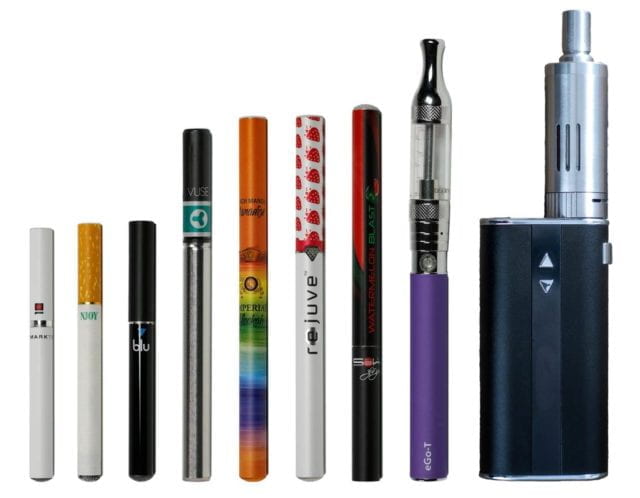By Cara Weiner Sultan, MSW
As your children move to middle and high school, their backpacks no longer contain markers, crayons, and scissors. Instead, school supplies become an interesting assortment of computers, phones, chargers, and other electronic devices. Did you know that the electronic-looking contents of your child’s backpack may actually be masking an e-cigarette or vaping device?
An e-cigarette creates an aerosol by using a battery to heat liquid that usually contains nicotine, flavorings, and other additives. Oftentimes, the amount of nicotine contained in one e-cigarette is equal to a pack of 20 regular cigarettes.
Over the past few years, specific types of e-cigarettes targeting teens have emerged as popular. Social media has been effective in advertising directly to teens, even though the legal age to purchase e-cigarettes is 21. These new devices come in many appealing colors, shapes, and sizes, and may even appear identical to a USB flash drive which can plug into a computer. This makes e-cigarettes easily concealed at home, school, or even in the bathroom. They do not stand out among an assortment of flash drives and charging cords. These vaping devices are small and can be hidden easily in pockets, backpacks, or even a shirt sleeve in the back of the classroom.
Oftentimes, liquid nicotine refills in these new types of e-cigarettes are called “pods,” and come in enticing flavors, such as mint, mango, cucumber, banana split, and chocolate cake. These flavors spark curiosity and mask the harsh smelling tobacco. Youth are easily intrigued by these enticing flavors and quickly become hooked on nicotine. An added danger specific to some types of pods is that they use nicotine salts which allow higher levels of nicotine to be inhaled without as much irritation as traditional e-cigarettes. Alarmingly, the CDC reports that two-thirds of specific popular e-cigarette brand users ages 15-24 don’t even realize that the e-cigarettes contain nicotine.
The health risks of vaping and using e-cigarettes are significant. Nicotine is poison to the adolescent brain which is still developing until the age of 25. Using nicotine may change the way synapses or connections are formed in the brain, leading to poor impulse control, difficulty learning, mood disorders, and a propensity for other addictions. The long term effects of the chemicals specific to each vaping product are still being studied, but scientists agree they are not safe and advertising to youth must be curtailed. Over the past two years, the FDA has taken a lead role in a directed campaign called “The Real Cost” to educate youth about the dangers of e-cigarettes.
Take a moment, educate yourself as a caregiver, learn about what’s in your child’s backpack, and talk to your child if you feel this is a concern. Be patient, avoid criticism, and remember it should be a conversation, not a lecture. Most of all, set a good example by remaining tobacco-free yourself.
Please see below for additional resources:
https://therealcost.betobaccofree.hhs.gov/?g=t
https://www.cdc.gov/tobacco/infographics/youth/pdfs/e-cigarettes-usb-flash-508.pdf
https://e-cigarettes.surgeongeneral.gov/getthefacts.html
https://med.stanford.edu/tobaccopreventiontoolkit/E-Cigs.html
Please watch this brief video from Tobacco Free California for a visual of what these devices look like:
https://www.youtube.com/watch?v=fjDP8rTktWw
Cara Weiner Sultan is a Parent Educator with Cornell Cooperative Extension of Suffolk County’s Family Health and Wellness Program. She can be reached at caw10@cornell.edu
